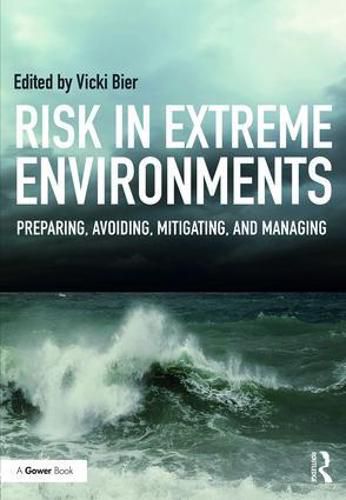Readings Newsletter
Become a Readings Member to make your shopping experience even easier.
Sign in or sign up for free!
You’re not far away from qualifying for FREE standard shipping within Australia
You’ve qualified for FREE standard shipping within Australia
The cart is loading…






Risk in Extreme Environments presents a wide-ranging discussion of approaches for assessing and managing extreme risks. Extreme events are not only severe, but also outside the normal range of experience of the system in question, and can include environmental catastrophe; engineering failure; financial or business meltdown; and nuclear or other extreme terrorism. The book focuses on synthesizing research results in a way that provides insights useful to decision makers, and enables them to ask probing questions about the risks faced by their organizations, identify creative solutions, and minimize the neglect of extreme risks that can come from a focus on mundane or ordinary management challenges.
The book details case studies on nuclear power, infectious diseases, and global catastrophic risks, in addition to sections on risk assessment, risk management, and risk perceptions. Since effective management benefits from an interdisciplinary perspective, the chapter authors include experts in economics, engineering, geography, law, political science, psychology, sociology, and science in addition to risk analysis.
Risk in Extreme Environments is an accessible and valuable resource for risk managers and other decision makers responsible for large complex business and government decisions, while also providing enough detail and references to be informative for risk analysts interested in learning more about technical aspects of the various methods.
$9.00 standard shipping within Australia
FREE standard shipping within Australia for orders over $100.00
Express & International shipping calculated at checkout
Risk in Extreme Environments presents a wide-ranging discussion of approaches for assessing and managing extreme risks. Extreme events are not only severe, but also outside the normal range of experience of the system in question, and can include environmental catastrophe; engineering failure; financial or business meltdown; and nuclear or other extreme terrorism. The book focuses on synthesizing research results in a way that provides insights useful to decision makers, and enables them to ask probing questions about the risks faced by their organizations, identify creative solutions, and minimize the neglect of extreme risks that can come from a focus on mundane or ordinary management challenges.
The book details case studies on nuclear power, infectious diseases, and global catastrophic risks, in addition to sections on risk assessment, risk management, and risk perceptions. Since effective management benefits from an interdisciplinary perspective, the chapter authors include experts in economics, engineering, geography, law, political science, psychology, sociology, and science in addition to risk analysis.
Risk in Extreme Environments is an accessible and valuable resource for risk managers and other decision makers responsible for large complex business and government decisions, while also providing enough detail and references to be informative for risk analysts interested in learning more about technical aspects of the various methods.